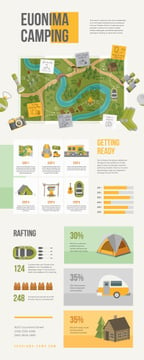While both deal strengths in various atmospheres, it's important to figure out which type of insulation will certainly best offer your needs. The insulation you pick impacts warmth, weight, water resistance, compressibility and rate.
Down is gathered from waterfowl, typically ducks or geese. It is prized for its lightness, simple compression and protecting buildings. Nonetheless, down comes to be less effective when wet.
Warmth-to-Weight
A high warmth-to-weight ratio is desired in outdoor clothes and gear. The protecting residential properties of down feathers make them an excellent alternative for this objective, as they are exceptionally cozy and light-weight.
However, down loses its insulating abilities when it splashes, suggesting it requires to be coupled with a water-proof covering. In addition, some individuals dislike down, making synthetic jackets a better alternative for them.
Artificial insulations are typically made from recycled polyester and designed to simulate down's protecting homes. They are not as lightweight as down, but they do not lose their shielding abilities when they get wet and dry more quickly than down. They are additionally a lot more affordable than down. Nonetheless, their life-span is shorter than down, resulting in higher maintenance and substitute expenses.
Water Resistance
The insulation you select for your job coat will certainly make a big distinction in just how comfortable you feel outdoors. However, the type of insulation you choose additionally has significant ramifications for your sustainability objectives.
Down is an excellent insulator for a variety of factors. It's light-weight, compressible, and offers a great warmth-to-weight proportion. However, it doesn't fare well when it gets wet. Down globs up and sheds its loft when wet, which can significantly minimize its capacity to trap warmth.
Synthetic insulation products, such as Thinsulate and Primaloft, stand up better against damp problems. They normally have a limited weave or chemical layer that maintains water from penetrating the textile. This allows the insulation to remain breathable, even if wet. It's worth noting that synthetics can likewise be unpleasant when damp, however they maintain their shielding residential properties.
Compressibility
While goose down does have a superior warmth-to-weight ratio, synthetic insulation carries out likewise. Nevertheless, unlike down which soaks up and sheds its shielding abilities when wet, synthetic insulation does not. Because of this, it can keep its loft and catch cozy air in wet conditions.
Generally made from polyester sheets or clusters that resemble down, the most usual artificial insulation brands include PrimaLoft, FullRange, Thermoball and Patagonia's PlumaFill. While it still can not match down's loftiness and warmth-to-weight, artificial coats are lightweight, fast to completely dry and more economical than down. This makes synthetic jackets excellent for wet atmospheres, or if you're prone to sweating heavily. Synthetic coats are additionally less delicate than down and can lose. This durability reaches their face textiles which are usually thicker and a lot more resilient than down.
Resilience
A major factor to consider in sustainability is a product's durability and resilience. All-natural products like cork, ThermaCork broadened cork and Havelock wool last longer than artificial alternatives like fiberglass and plastic. They likewise require much less upkeep and can stand up to severe environmental conditions.
Nonetheless, all-natural insulation does not perform too when damp as synthetic alternatives. Woollen and fleece glob together when damp, jeopardizing their ability to catch heat. Synthetic insulation, on the other hand, does not soak up wetness and continues to shield even when saturated.
This makes synthetic insulation ideal for damp climates and exhausting tasks where you may sweat greatly. It's likewise easier to clean and dries faster than down. This included toughness and dependability make synthetic insulation an overall victor in this group. This equates to durable shielded work boots that last long and maintain you heat through requiring environments.
Sustainability
All-natural materials supply biodegradability and reusable a smaller ecological footprint, while artificial options brag resilience and ingenious applications that support energy performance. Nevertheless, it is necessary to comprehend the true ecological impact of these insulation products from cradle-to-grave.
For example, if an all-natural insulation product has to take a trip a long distance from its source to the structure site, transportation-related exhausts increase its general carbon impact. Choosing locally sourced and reused products decreases that influence. And, opting for GREENGUARD and Cradle to Cradle accreditations makes certain that insulation is free of unstable natural compounds (VOCs) and supports accountable sourcing and labor problems.
Lamb's wool and cork are sustainable insulation resources that are collected without harming the tree or plant. Both have the included advantage of being naturally resistant to mold, parasites and moisture.
